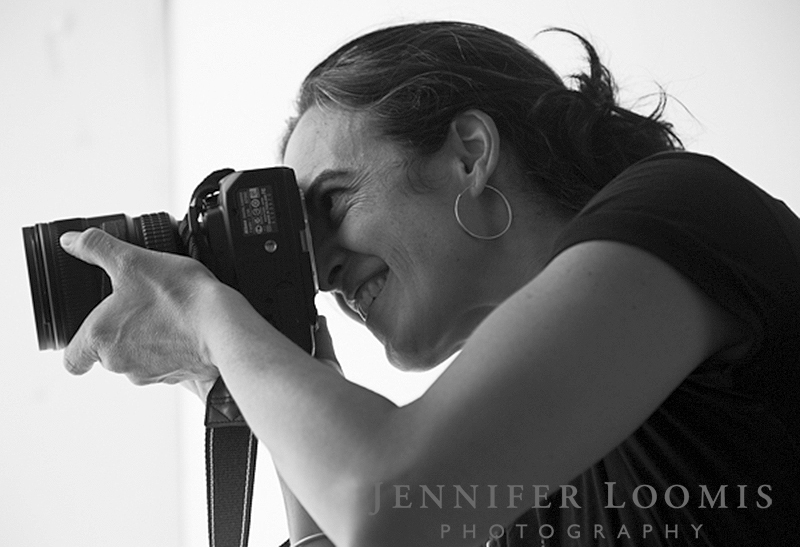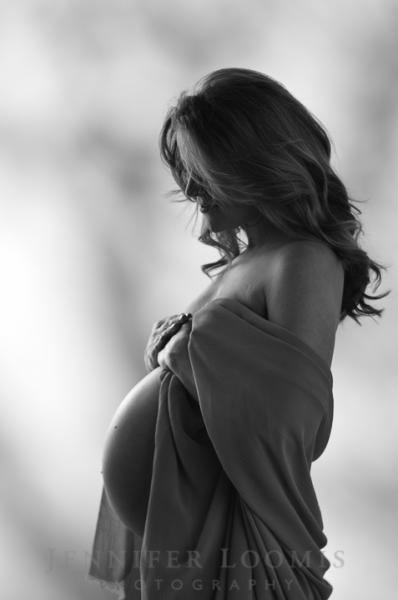
Jennifer Loomis has been a Fine Art Maternity and Family Photographer since 2001 and is a pioneer in Maternity Photography. She has photographed over 4,000 women and their families including celebrities, sports stars, and musicians from around the world.
With more than 25 years of experience, Jennifer has learned how to paint with light to capture moments and feelings that create compelling photographs of a woman and her family.
According to her clients, investing in a Fine Art Photography Session with Jennifer Loomis is about more than just getting your photograph taken, it’s about collaborating together to create a beautiful piece of artwork that is representative of you, your body, and your family.
Catch Jennifer Loomis as she walks us through her journey as a maternity photographer and the key essentials of a successful photo session. Read on.
Namita Nayyar:
You started off as a photojournalist and went on to become a pioneer of maternity photography. Could you share your journey and what motivated you to pick up this field?
Jennifer Loomis:
Yes, sure. It is kind of a fun roundabout story.
I became interested in photographing pregnant women around 1991 while living in San Francisco as a struggling artist. Those were such good days in SF. So much creativity. So cheap to live. There was so much happening. I was working for minimum wage at a camera store.
Anyway, I signed up for a class on photographing the female nude and when I showed up, I was the only female photographer in the room. I was shocked. Even though I was a young woman in her twenties, I was very aware that my creative voice and how I looked at the female body was very different than my male classmates. I realized that the photographs of women in magazines and advertisements were taken mostly by men. Why is that important? It is harmful to women.
Females were consuming images that were not authentic because it was the male gaze that was dictating what was beautiful. These photos were often over-sexualized and objectified, and almost always of a certain body type. Women were judging themselves using an unfair metric for beauty.
So back to the class… the first part of the class was more of a boudoir style of photography and, unlike my classmates, I just wasn’t interested. Then the same model came out on a simple black backdrop and started just slowly moving, and all I could see what light, shape, and form. I got goosebumps and from that moment, I knew I wanted to be a female photographer photographing the female form. I photographed everyone who would let me be friends, roommates, friends of friends, pregnant friends, and non-pregnant friends.
When I photographed my first pregnant woman, I fell in love with her beauty, the symbolism of the pregnant female, and the story and history that she represents. Given we all come from pregnant women, I was stunned at the lack of representation in art history,= and the current media like advertising. I immediately knew I wanted to bring this shape into the public eye, make it a part of the conversation and challenge society’s definition of beauty. I had found my passion.

So back to your question…Even though I knew I wanted to do this type of work, photographing women and pregnant women, I asked all the photographers I knew (most of them were men) and all of them were discouraging, saying, “No one is going to pay you to photograph them pregnant. You should go to school and get a degree in Photojournalism so you can actually get a job.” This was the 90s and Demi Moore had just been photographed for the cover of Vanity Fair by Annie Leibovitz which caused quite a stir in the United States. No one knew yet, what was happening in the psyche of the pregnant woman. A movement was starting.
So I believed these guys and went to graduate school for photojournalism. I loved it. I had a great ride, covering stories all over the globe for different publications and NGOs. I learned all about finding the light, capturing the moment, and studying the best photographers in history and in the modern world. I met many of them; I talked to them; I mentored them. At one point I moved to Indiana to work with a photo editor known as the Zen Master of Photojournalism because he taught his photographers how to photograph with their heart instead of their head. I really believe he made the biggest difference in my work. I grew into a heartfelt photographer telling stories that made a difference in people’s lives.
Fast-forward to East Africa where I was living and photographing for some large NGOs. While living there, I got an opportunity to move back to the States, Seattle, actually, to work with some amazing photographers who were starting MSNBC.com’s multimedia team. I had gone to grad school with many of them and this was cutting-edge stuff. I thought this was a good opportunity, and took it. It was a wonderful opportunity and after three years, I missed telling stories.
I had this big business plan to tell stories for NGOs using audio, video, and still photographs. I mortgaged my house and began. The lead time for those large jobs was often several months and I needed to pay my mortgage. So I had a plan, in order to get some income coming in, I literally hung up a few photographs of my artistic photographs of pregnant women in a maternity shop. People started calling me. In fact, the phone would not stop ringing.
Another break came when I was having coffee with a TV cameraman for a local Seattle TV station to ask him questions about shooting videos for NGOs. Out of nowhere, he said, I Googled you and don’t you photograph pregnant women? I said, “Yes, but don’t tell anyone. I can’t have the Gates Foundation or other large NGOs I work for know about this.” He said this would make a wonderful Mother’s Day story. And I almost said no way! So funny! He talked me into it. As soon as that story came out, I had to have three phone lines installed so that I wouldn’t miss a call. Three phone lines! Before I knew it, I had three studios, one in SF one in NY, and of course one in Seattle. The movement had started. Celebrities were showing their bumps, and women started to recognize this was something they wanted too.

It was a crazy and exhilarating 15 years. I was featured in every major paper, on every major TV channel, and on every major website. I photographed high-profile celebrities, CEOS, and sports figures. I had a book come out with the forward written by the famous Penny Simkin who founded the role of the doula for birth support. She is one of the grandmothers of midwifery in the Pacific Northwest. I had a retrospective of my work in Perugia, Italy in the town adjacent to the only known pregnant Madonna. I was the number one listing on Google for 15 years straight, in every single market. It was so much fun! And you know what the best part was? So many women came to me and walked away feeling beautiful, beautiful in their bodies for the first time since getting pregnant. Or, these women saw themselves in a new way, as powerful, and sacred. Knowing that I changed so many pregnant women’s lives is such a blessing. Finally, I was able to challenge society’s definition of beauty and watched the rise of the genre of maternity photography take on a life of its own. I am so blessed.
Full Interview is Continued on Next Page
This interview is exclusive and taken by Namita Nayyar President womenfitness.net and should not be reproduced, copied, or hosted in part or full anywhere without express permission.
All Written Content Copyright © 2023 Women Fitness
Disclaimer
The Content is not intended to be a substitute for professional medical advice, diagnosis, or treatment. Always seek the advice of your physician or other qualified health provider with any questions you may have regarding a medical condition.